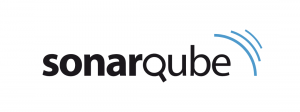Select, design, and implement solutions to requirements. Solutions, designs, and implementations encompass products, product components, and product-related lifecycle processes either singly or in combination as appropriate.
Establishes organizational expectations for addressing the iterative cycle in which product or product component solutions are selected, designs are developed, and designs are implemented.
The Technical Solution process is applicable at any level of the product architecture and to every product, product component, and product related lifecycle process. Throughout the Technical Solution process, where the terms “product” and “product component” are used, their intended meanings also encompass services, service systems, and their components.
The Technical Solution process focuses on the following:
Typically, these activities interactively support each other. Some level of design, at times fairly detailed, can be needed to select solutions. Prototypes or pilots can be used as a means of gaining sufficient knowledge to develop a technical data package or a complete set of requirements. Quality attribute models, simulations, prototypes or pilots can be used to provide additional information about the properties of the potential design solutions to aid in the selection of solutions. Simulations can be particularly useful for projects developing systems-of-systems.
Technical Solution specific practices apply not only to the product and product components but also to product related lifecycle processes. The product related lifecycle processes are developed in concert with the product or product component. Such development can include selecting and adapting existing processes (including standard processes) for use as well as developing new processes.
Processes associated with the Technical Solution process receive the product and product component requirements from the requirements management processes. The requirements management processes place the requirements, which originate in requirements development processes, under appropriate configuration management and maintain their traceability to previous requirements.
For a maintenance or sustainment project, the requirements in need of maintenance actions or redesign can be driven by user needs, technology maturation and obsolescence, or latent defects in the product components. New requirements can arise from changes in the operating environment. Such requirements can be uncovered during verification of the product(s) where its actual performance can be compared against its specified performance and unacceptable degradation can be identified. Processes associated with the Technical Solution process should be used to perform the maintenance or sustainment design efforts.
For product lines, these practices apply to both core asset development (i.e., building for reuse) and product development (i.e., building with reuse). Core asset development additionally requires product line variation management (the selection and implementation of product line variation mechanisms) and product line production planning (the development of processes and other work products that define how products will be built to make best use of these core assets).
In Agile environments, the focus is on early solution exploration. By making the selection and tradeoff decisions more explicit, the Technical Solution process helps improve the quality of those decisions, both individually and over time. Solutions can be defined in terms of functions, feature sets, releases, or any other components that facilitate product development. When someone other than the team will be working on the product in the future, release information, maintenance logs, and other data are typically included with the installed product. To support future product updates, rationale (for trade-offs, interfaces, and purchased parts) is captured so that why the product exists can be better understood. If there is low risk in the selected solution, the need to formally capture decisions is significantly reduced.
Organizations may choose to purchase a technical solution process and procedures rather than to develop them. Using the Causal Analysis and Resolution process, they can tailor the process to fit their organization.
When your employees have questions, they want immediate answers. And when different needs arise during the workday, employees are motivated to learn at the moment.
In-the-flow learning delivers real-time education when your employees need it most and unleashes opportunities to:
Here are the training modules for Technical Solution:
 This is a test
This is a test